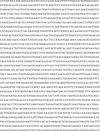Synthesizing a Cellulase like Chimeric Protein by Recombinant Molecular Biology Techniques
- PMID: 27468362
- PMCID: PMC4959789
- DOI: 10.4172/2155-9821.1000285
Synthesizing a Cellulase like Chimeric Protein by Recombinant Molecular Biology Techniques
Abstract
In order to meet the Renewable Fuels Standard demands for 30 billion gallons of biofuels by the end of 2020, new technologies for generation of cellulosic ethanol must be exploited. Breaking down cellulose by cellulase enzyme is very important for this purpose but this is not thermostable and degrades at higher temperatures in bioreactors. Towards creation of a more ecologically friendly method of rendering bioethanol from cellulosic waste, we attempted to produce recombinant higher temperature resistant cellulases for use in bioreactors. The project involved molecular cloning of genes for cellulose-degrading enzymes based on bacterial source, expressing the recombinant proteins in E. coli and optimizing enzymatic activity. We were able to generate in vitro bacterial expression systems to produce recombinant His-tag purified protein which showed cellulase like activity.
Figures






References
-
- Cheng YS, Ko TP, Wu TH, Ma Y, Huang CH, et al. Crystal structure and substrate-binding mode of cellulase 12A from Thermotoga maritima. Proteins. 2010;79:1193–1204. - PubMed
-
- Blumer-Schuette SE, Kataeva I, Westpheling J, Adams MW, Kelly RM. Extremely thermophilic microorganisms for biomass conversion: status and prospects. Curr Opin Biotechnol. 2008;19:210–217. - PubMed
-
- Fierobe HP, Bayer EA, Tardif C, Czjzek M, Mechaly A, et al. Degradation of cellulose substrates by cellulosome chimeras. Substrate targeting versus proximity of enzyme components. J Biol Chem. 2002;277:49621–49630. - PubMed
Grants and funding
LinkOut - more resources
Full Text Sources
Other Literature Sources
